Last updated on
Discover the various factors that influence the cost of a couch as we delve into materials, brands, and styles to help you make an informed decision for your home.
Finding the perfect couch for your living room can be a daunting task. With so many styles, colors, and materials to choose from, it can feel overwhelming.
But before you even start browsing through catalogs or visiting furniture stores, there is one question that needs to be answered: How much is a couch? The price of a couch can vary greatly depending on several factors such as size, material, brand, and design. In this article, we will explore the different types of couches available in the market and their corresponding prices to help you make an informed decision when shopping for one.
So sit back (on your old couch) and get ready to learn everything you need to know about how much a new sofa might cost you!
Key takeaways:
- Setting a budget helps narrow down options and prevents overspending.
- Couch prices are influenced by factors like materials, brand, and design.
- Materials like leather and fabrics impact cost and durability.
- Different types of couches cater to various needs and preferences.
- Consider the size, dimensions, and shape that will fit your space.
Table of Contents
Set Your Budget

The first step in buying a couch is to set your budget. Couches can range from a few hundred dollars to several thousand, so it’s important to determine how much you’re willing and able to spend before you start shopping.
Consider your financial situation and the other expenses that come with furnishing or redecorating a room.
Once you have an idea of what you can afford, stick with it! It’s easy to get carried away when browsing through beautiful furniture pieces, but overspending on one item could mean sacrificing another essential piece for your home decor project.
Setting a budget also helps narrow down the options available within your price range. You’ll be able to focus on finding couches that meet both your style preferences and financial limitations without wasting time looking at items outside of those parameters.
Couch Price Factors

The first and most important factor is your budget. Before you start shopping for a new sofa, set a realistic budget that you are comfortable with.
This will help narrow down your options and prevent overspending.
Other factors that influence the cost of a couch include materials used in construction, brand name recognition, design complexity or simplicity (e.g., modern vs traditional), size and dimensions (e.g., sectional vs loveseat), upholstery options such as leather or fabric type/quality level chosen by customers themselves at purchase time; customization costs like adding extra pillows or changing armrests shape; frame/fill considerations such as hardwood frames versus metal ones which may affect durability over time due to wear-and-tear from daily use.
Materials & Construction
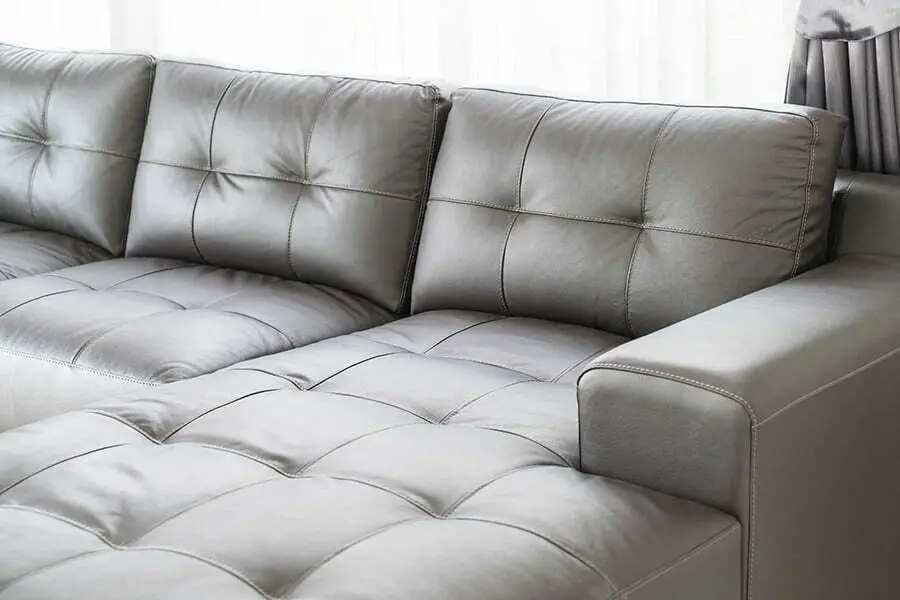
Generally, the more durable and high-quality the material is, the higher its cost will be. Leather sofas are among the most expensive due to their durability and luxurious feel.
On average, leather couches range from $1,500 to $3,000 or even more for designer brands.
On the other hand, fabric sofas come in various types of materials such as cotton blends or microfiber that offer different levels of comfort and durability at varying prices. A basic fabric sofa can cost anywhere between $300-$800 while a premium one with high-end fabrics like velvet or linen may go up to several thousand dollars.
Apart from materials used on upholstery covers; construction also plays an essential role in determining how much you’ll pay for your new sofa set. Sofas made with hardwood frames tend to last longer than those made with softwood frames like pine which are less sturdy but cheaper.
Types of Couches

Each type has its unique features and benefits that cater to different needs and preferences. Some of the most popular types of couches include sectional sofas, loveseats, sleeper sofas, reclining sofas, futons and chaise lounges.
Sectional Sofas: These are perfect for large living rooms or open spaces as they can be configured into various shapes such as L-shape or U-shape depending on your preference.
Loveseats: As their name suggests these are smaller than regular-sized couches but larger than armchairs. They’re ideal for small apartments or cozy living rooms where space is limited.
Sleeper Sofas: If you have frequent guests staying over at your place then a sleeper sofa might be an excellent option for you. It doubles up as both a bed and sofa making it versatile furniture that saves space too!
Reclining Sofas: These come with built-in recliners which allow users to adjust their seating position according to their comfort level while watching TV or reading books.
Futons & Chaise Lounges – Futons serve dual purposes; they can function both as beds when unfolded flatly and also provide comfortable seating during daytime hours when folded uprightly against walls. Chaise loungers offer ultimate relaxation by allowing users stretch out fully while enjoying some downtime after work hours.
Size & Dimensions
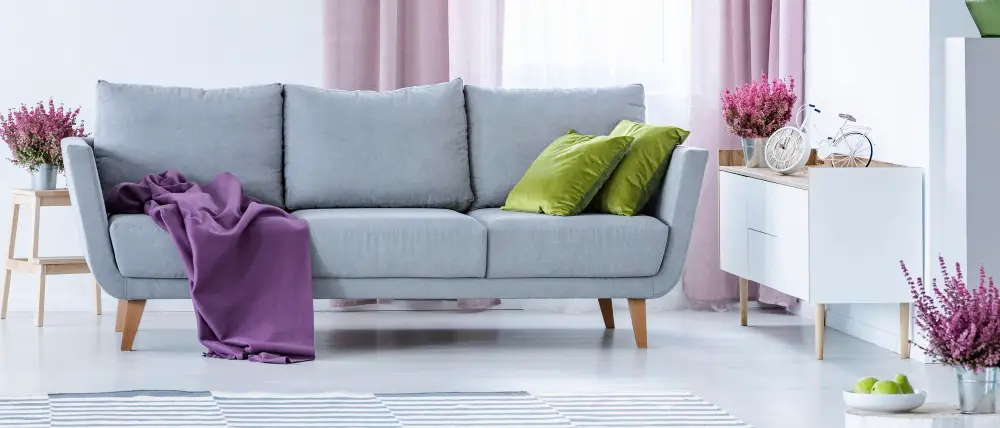
Before you start shopping, measure the space where you plan to place your new sofa. Consider the room’s layout and traffic flow when choosing the right size for your needs.
A small apartment may require a loveseat or compact two-seater while larger living rooms can accommodate sectionals or oversized sofas.
In addition to measuring your space, consider how many people will be using the couch regularly and if you want additional seating options like an ottoman or chaise lounge. Keep in mind that bigger isn’t always better; an oversized sofa can overwhelm a small room while a tiny loveseat might look out of place in a spacious area.
Another important factor is doorways and hallways leading into your home as well as staircases if applicable – make sure that any potential purchase will fit through these spaces without difficulty during delivery.
Choose Perfect Size and Shape
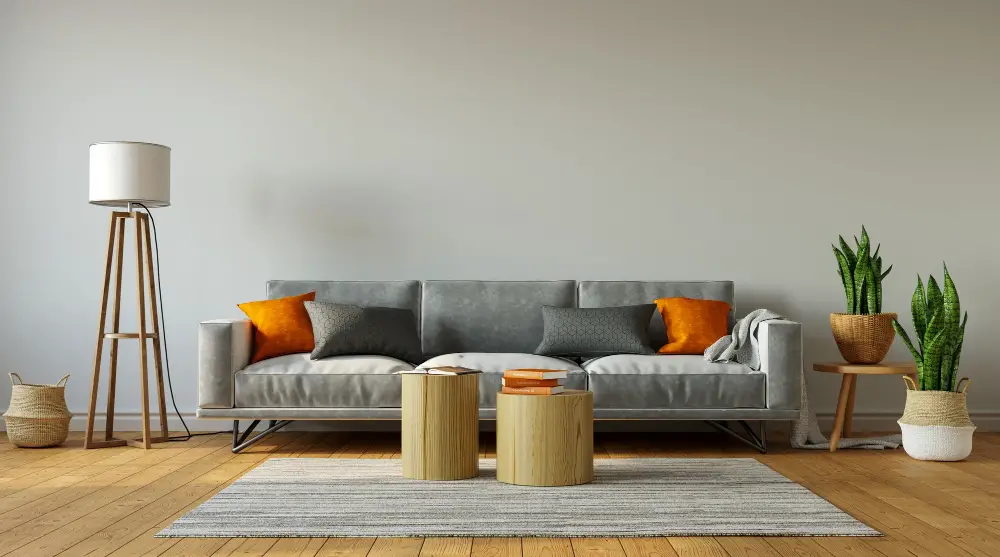
Before you start shopping for a new sofa, take accurate measurements of your space to ensure that you choose the right size and shape. A large sectional may be ideal for a spacious living room but could overwhelm a smaller one.
Similarly, an L-shaped couch might not fit well in every corner of your home.
Consider how many people will use the sofa regularly and whether it needs to accommodate overnight guests or serve as extra sleeping space when needed. If so, consider purchasing a sleeper sofa with pull-out bed functionality.
The shape of the couch is also important because it affects how much floor space is taken up by furniture in relation to other pieces in the room such as coffee tables or accent chairs. A rectangular-shaped sofa works best if you have ample floor area while curved sofas are great options if you want something unique yet functional.
Upholstery Options

It not only affects the overall look and feel of your furniture but also its durability and maintenance requirements. There are several upholstery options available in the market, each with its own pros and cons.
Leather is a popular choice for those who want a classic, sophisticated look that can withstand wear and tear. However, it can be expensive compared to other materials like fabric or microfiber.
Fabric upholstery comes in various colors, patterns, textures which makes it easy to match any decor style you have at home. It’s also more affordable than leather but may require more maintenance over time.
Microfiber is another option that has gained popularity due to its softness and stain-resistant properties making it perfect for families with kids or pets around.
Ideal Upholstery Options
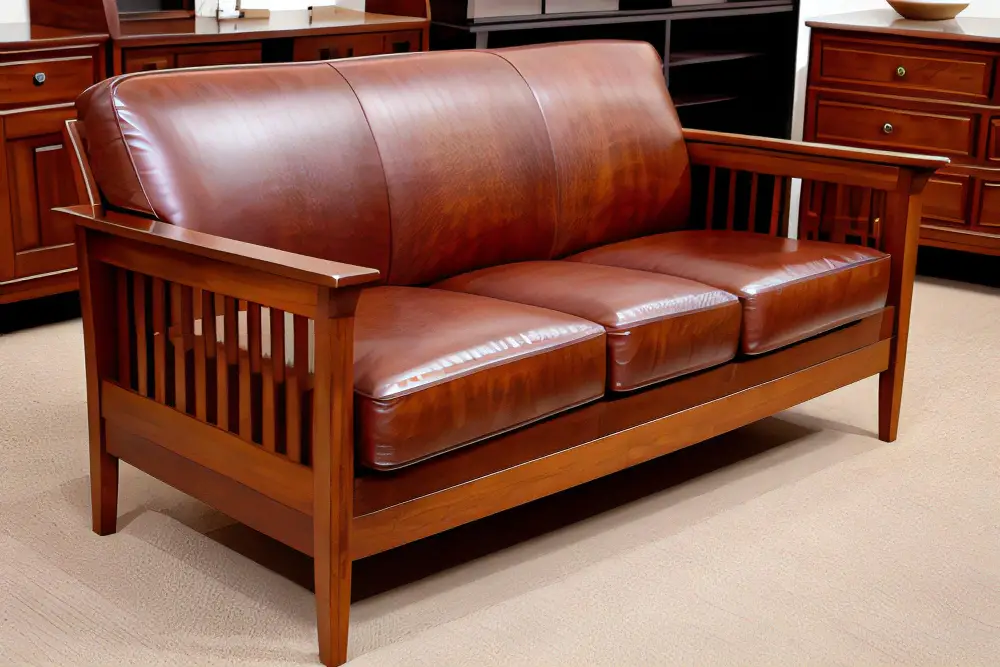
The most common materials used for upholstery include leather, fabric, and microfiber. Each of these materials has its own unique characteristics that make them suitable for different lifestyles and preferences.
Leather is a popular choice due to its durability and timeless appeal. It’s easy to clean but can be prone to scratches if not maintained properly.
Fabric is another option that offers a wide range of colors and patterns. It’s comfortable but may require more maintenance than leather or microfiber.
Microfiber is a synthetic material that resembles suede or velvet in texture. It’s durable, stain-resistant, and easy to clean making it an excellent choice for families with kids or pets.
Ultimately, the ideal upholstery option depends on your lifestyle needs as well as personal style preferences.
Customization Costs

Customizing your sofa can include choosing the fabric, color, size or even adding extra features like recliners or cup holders. However, keep in mind that customization comes at an additional cost.
The price of customizing a couch will depend on several factors such as the level of complexity involved in creating it and materials used.
For instance, if you want a leather sectional with built-in storage compartments and adjustable headrests made from high-quality materials like top-grain leather or hardwood frames – expect to pay more than what you would for an off-the-shelf model.
Before deciding on customizing your sofa make sure it fits within your budget by getting quotes from different manufacturers so that you can compare prices before making any decisions. Remember also to factor in delivery costs which may vary depending on where they are coming from.
Frame and Fill Considerations
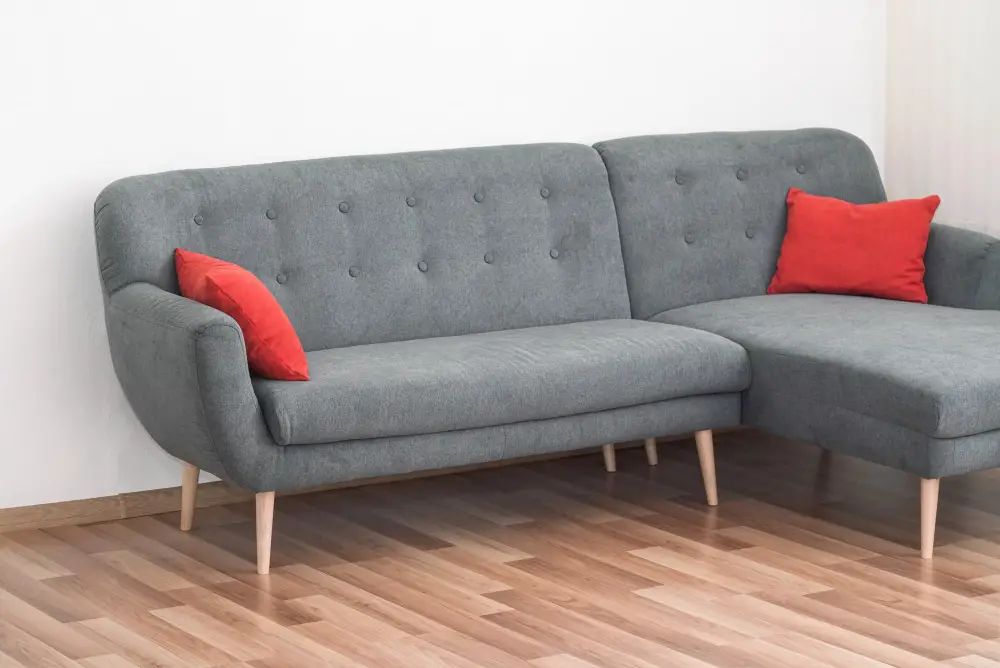
The frame is essentially the skeleton of your couch, while the fill refers to what’s inside – cushions, padding or foam. A sturdy frame made from hardwood such as oak or maple will ensure that your sofa lasts for years without sagging or breaking down easily.
On top of this, you’ll want to consider what type of filling material works best for you based on personal preference and budget constraints.
For those who prefer a firmer seat with more support may opt for high-density foam fills which offer excellent support but tend to be pricier than other options like polyester fiberfill which provides softer cushioning at an affordable price point.
Warranty & Durability
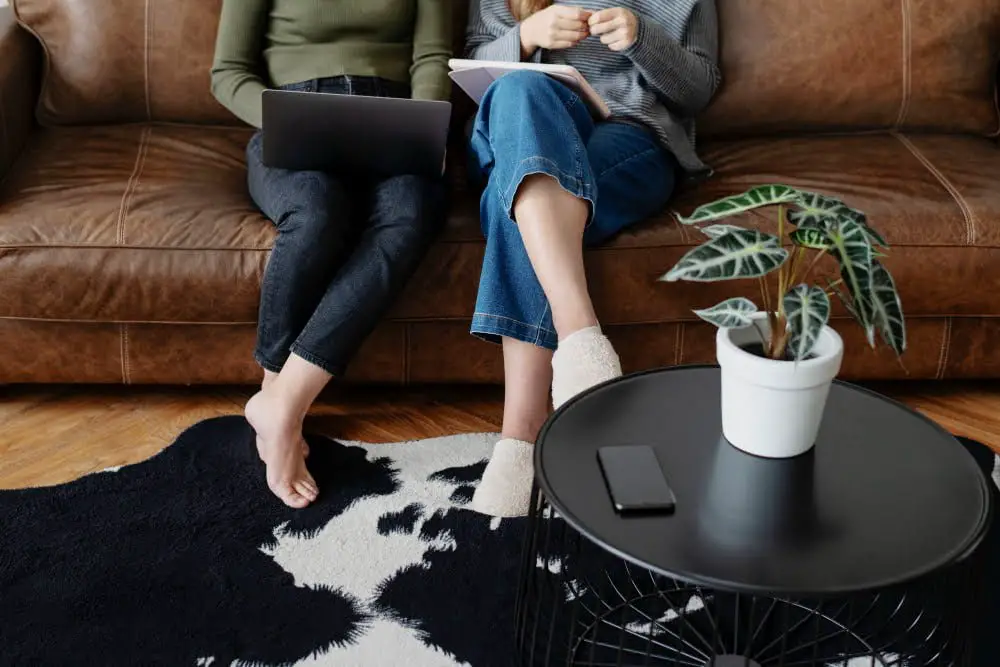
A good warranty can give you peace of mind knowing that your investment is protected against any manufacturing defects or damages that may occur during normal use. Most furniture manufacturers offer warranties ranging from one year to a lifetime, so be sure to read through the terms and conditions carefully before making your purchase.
Durability is also an essential factor when choosing a couch. You want something that will last for years without showing signs of wear and tear quickly.
Look for sturdy frames made from hardwoods like oak or maple as they are more durable than softwoods like pine or plywood.
Pay attention to how well-crafted the sofa is by checking its joints – they should be tight-fitting with no gaps between them; otherwise, it could indicate poor construction quality leading to early damage.
Sofa Life Expectancy

A well-made sofa can last for many years, while a poorly constructed one may need to be replaced after just a few. The average lifespan of a sofa is around 7-15 years with proper care and maintenance.
Factors that affect the longevity of your couch include the quality of materials used in construction, frequency and intensity of use, as well as exposure to sunlight or moisture. For example, leather sofas tend to have longer lifespans than fabric ones due to their durability and resistance against stains.
To extend the life expectancy of your couch even further, there are several things you can do such as rotating cushions regularly or using slipcovers for protection against spills or pet hair. Avoid placing heavy objects on your sofa which could cause damage over time.
Online Vs. In-Store

Both methods have their advantages and disadvantages, so it’s important to weigh them carefully before making your decision.
Online shopping offers convenience and flexibility. You can browse through hundreds of options from the comfort of your own home at any time that suits you best.
Plus, many online retailers offer free shipping and hassle-free returns policies.
On the other hand, in-store shopping allows you to see and touch the furniture before making a purchase decision. This is especially important when choosing upholstery materials as they can look different in person than they do on screen.
Discounts & Sales

Many furniture stores offer discounts during holiday weekends such as Memorial Day, Labor Day, and Black Friday. You can also find deals during end-of-season clearance sales or when new models are released.
It’s important to keep in mind that while discounts may seem attractive, they should not be the sole factor in your decision-making process. Make sure you still prioritize quality and comfort over price.
Another option for finding discounted couches is shopping at outlet stores or online retailers like Wayfair or Overstock.com. These sites often have lower prices than traditional brick-and-mortar stores due to their lower overhead costs.
When shopping for discounted couches, it’s essential to do your research beforehand so you can compare prices across different retailers and ensure that you’re getting the best deal possible without sacrificing quality.
Best Month to Buy a Sofa

The best time to buy a sofa is during the off-season when furniture stores are trying to clear out their inventory for new models. Typically, the best months to buy a sofa are January and July as retailers offer discounts of up to 50% off on floor models or discontinued styles.
However, keep in mind that buying during these peak sale periods can also mean limited options and less variety in terms of colors and designs. If you have your heart set on a specific style or color scheme, it may be worth waiting until other sales events like Black Friday or Cyber Monday where retailers often offer significant discounts.
Ultimately, the decision of when to buy comes down to personal preference and budget constraints.
Financing Options

Many furniture stores offer financing plans that allow you to pay for your new sofa over time with little or no interest. However, it’s important to read the fine print and understand all terms and conditions before signing up for any financing plan.
Some retailers may require a down payment or charge high-interest rates if you don’t pay off your balance within a certain period. Make sure you know exactly how much interest will accrue over time so that there are no surprises when it comes time to make payments.
Another option is using credit cards with low-interest rates or zero percent introductory offers. This can be an excellent choice if used responsibly but remember not to overspend beyond what is necessary just because of this option.
Delivery & Assembly

Many furniture stores offer delivery and assembly services for an additional fee. It’s important to consider these costs when budgeting for your new sofa.
When scheduling delivery, make sure that the company can accommodate your schedule and has a clear understanding of where the couch needs to be placed in your home. Some companies may charge extra fees if they have to navigate stairs or tight spaces.
Assembly is another factor to consider when purchasing a new couch. While some sofas come fully assembled, others require some level of assembly upon arrival at your home.
Make sure you understand what is required before making a purchase so that you can plan accordingly.
If you’re not comfortable assembling furniture yourself, many companies offer professional assembly services for an additional fee as well.
Buying Used Couches
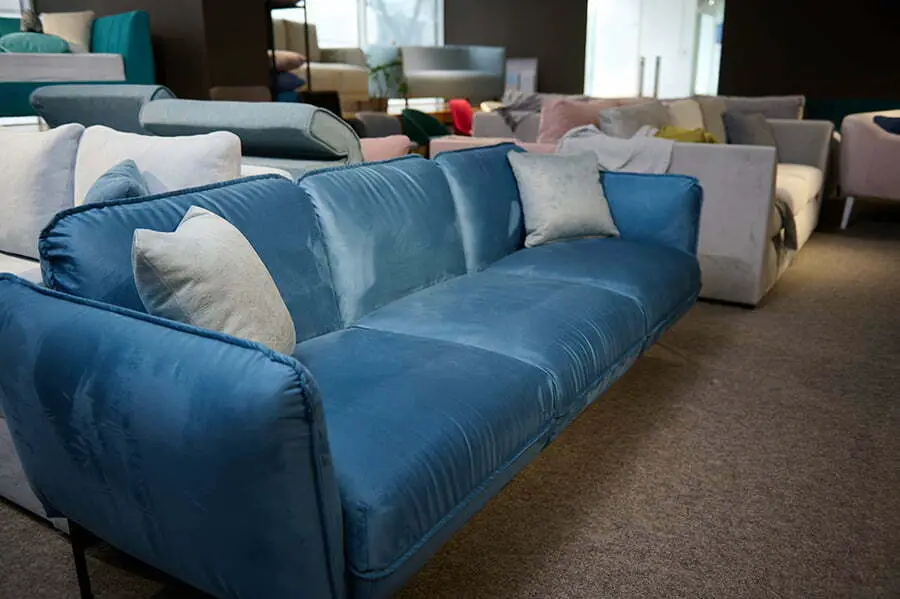
There are some things to consider before making your purchase. First and foremost, inspect the couch thoroughly for any signs of damage or wear and tear.
Look for stains, tears in the upholstery or cushions that have lost their shape over time.
It’s also important to ask about the history of the couch – how old is it? Has it been exposed to pets or smokers? These factors can affect not only its appearance but also its overall condition.
When shopping for used furniture online or at thrift stores, make sure you measure your space beforehand so that you don’t end up with a piece that doesn’t fit properly in your living room.
Lastly, keep in mind that while buying used furniture may save you money upfront; it may cost more down the line if repairs are needed sooner than expected.
Maintenance & Care

Regular maintenance and cleaning can help prevent stains, odors, and damage caused by wear and tear. The type of upholstery material will determine the best way to clean your couch.
For fabric sofas, vacuuming regularly with an upholstery attachment can remove dust and debris that may accumulate on the surface. Spot cleaning with a mild detergent solution or using professional upholstery cleaners can also help remove stains.
Leather sofas require special care as they are more delicate than other materials. Avoid exposing them directly to sunlight or heat sources as this could cause fading or cracking over time.
Use leather conditioners periodically to keep the material supple and moisturized.
In addition to regular cleaning routines, consider investing in protective covers for your sofa if you have pets or young children who may accidentally spill liquids on it.
Return & Exchange Policies
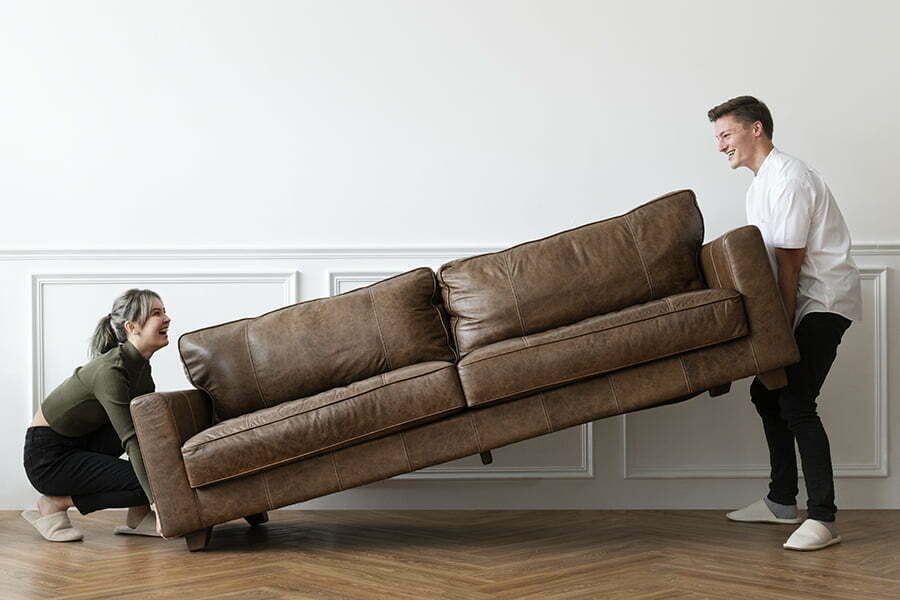
Even if you’ve done your research and found the perfect couch for your home, there is still a chance that it may not meet your expectations once you see it in person or try sitting on it. Some stores have strict no-return policies while others offer generous return windows of up to 30 days or more.
It’s also essential to understand what conditions must be met for an item to be eligible for returns or exchanges such as whether the product should be unused, undamaged with original packaging intact. Knowing how much a couch costs is just one part of buying furniture; understanding all aspects involved in purchasing will help ensure that you make an informed decision when investing in this significant piece of furniture.
FAQ
What is the average cost of a couch?
The average cost of a couch falls between $400 and $1,500, with the price depending on factors such as the type of upholstery.
Is $2000 expensive for a couch?
$2000 for a couch is considered “higher-end” and not expensive within the average range of $799-$1,999.
Are cheap sofas worth it?
Cheap sofas may not be worth it due to their lower build quality, leading to more frequent replacements and potentially higher overall costs in the long run.
What factors influence the price range of a couch?
Influential factors on the price range of a couch include design, materials, quality, and brand.
How do different materials and construction methods impact couch prices?
Couch prices are impacted by the types of materials used and construction methods, with higher-quality materials and more complex construction leading to increased costs.
What are some budget-friendly sofa alternatives for limited spaces?
Some budget-friendly sofa alternatives for limited spaces include futons, bean bags, floor pillows, and fold-out chairs.




